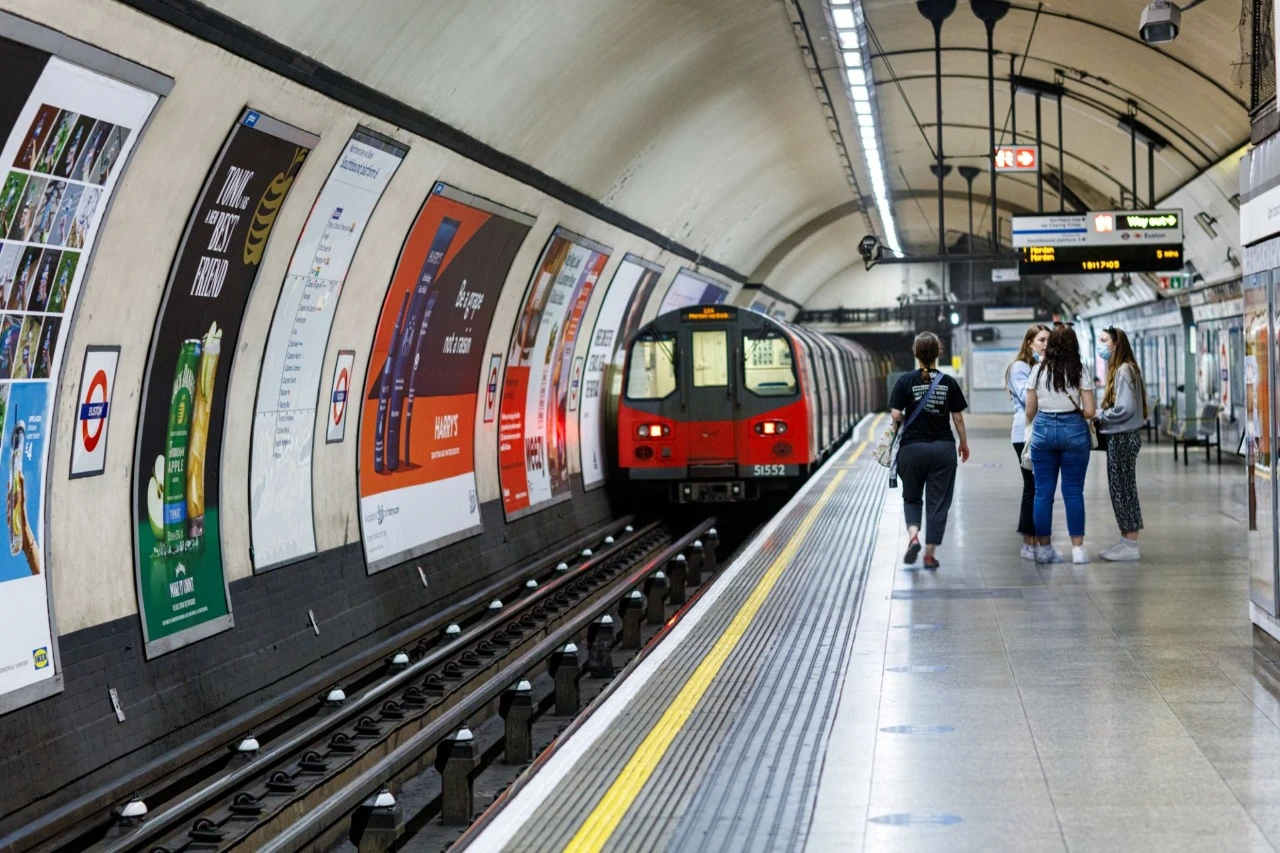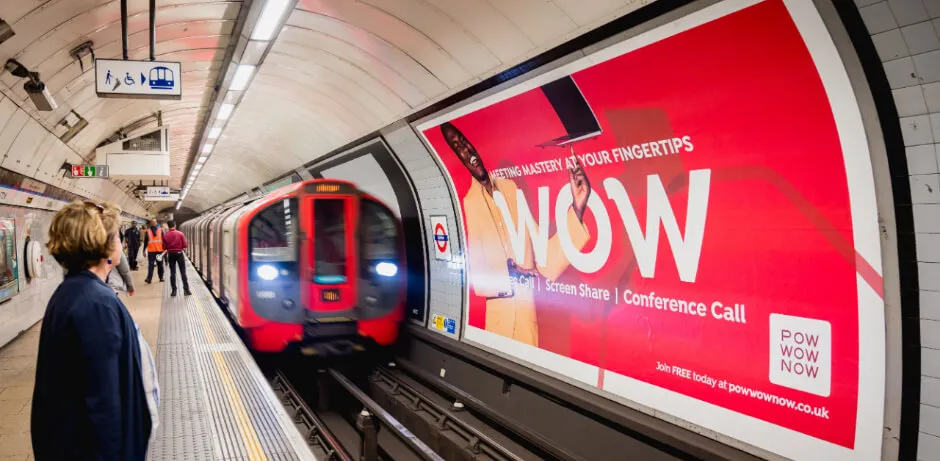
The London Underground, often referred to as the Tube, is one of the most effective advertising platforms in the UK. With millions of commuters using the network daily, tube advertising presents a unique opportunity to boost brand awareness and drive customer engagement. But how much does it cost to advertise on the London Underground, and what factors influence pricing? Let’s explore the details.
Why Choose London Underground Advertising?
Before diving into costs, it’s important to understand why so many brands invest in tube advertising. The London Underground provides:
- Unmatched Exposure: Over 3 million daily commuters ensure your adverts reach a vast and diverse audience.
- High Engagement: Passengers spend an average of 30 minutes on the tube, making them a captive audience.
- Strategic Targeting: With various station categories, you can target high-footfall areas or distribute ads across multiple locations for broad coverage.
- Multiple Advertising Formats: From posters and digital screens to train car panels and full-station takeovers, there are numerous ways to engage customers.
Want to learn more about why tube advertising is a game-changer? Read our in-depth article on Maximising Your Brand’s Reach with London Underground Advertising.
The Cost of Advertising on the London Underground
Tube advertising costs vary depending on factors such as ad format, station category, campaign duration, and seasonality. Below is a breakdown of pricing for common formats.
In-Station Advertising
- 4 Sheet: Small, highly visible posters located at strategic points in stations, starting from £190.
- 6 Sheet: Medium-sized posters, ideal for impactful messaging in high-footfall areas, starting from £400.
- 12 Sheet: Larger posters that provide ample space for creative and detailed ads, starting from £625.
- Escalator Panel: Ads displayed on the sides of escalators and stairs to capture commuters' attention as they move, with prices starting from £150 per panel.
- Ticket Gateway: Placed on ticket gates, guaranteeing passengers see the ad entering or exiting the station, starting from £5,000 per campaign.
- Station Takeover: A full-station advertising campaign, offering maximum visibility across all formats within the station, with costs starting from £50,000.
Platform Advertising
- 16 Sheet: Prominent posters on platforms, catching the eyes of passengers waiting for trains, starting from £500.
- 48 Sheet: Larger-than-life posters that dominate platform spaces for maximum visibility. £1,200
- 96 Sheet: The largest format available, providing enormous reach on platforms.
In-Carriage Advertising
- Tube Car Panels: Ads displayed within the carriages, ensuring your message is seen by passengers during their journeys, starting from £10 per panel.

Digital Advertising
- Digital 6 Sheet: Dynamic digital screens with engaging content in high-traffic areas.
- Digital 12 Sheet: Larger digital displays that allow for more engaging visuals and messaging.
- Digital Escalator Panel: Interactive digital screens on escalators, providing a modern touchpoint for ads.
- Digital Gateway Screens: Digital screens placed at ticket gates, maximising visibility at key entry points.
- Digital Ribbon: A creative, digital scrolling ribbon display, perfect for branding or messaging.
- Digital 48 Sheet: Large-scale digital displays for impactful, high-visibility campaigns.
Pricing for these formats varies, with costs starting from a few hundred pounds for smaller formats and scaling up to premium rates for large-scale digital screens and full-station takeovers. To determine the best options for your campaign, get in touch with us today!
Factors Affecting the Cost of Tube Advertising
Several elements influence the pricing of a London Underground advertising campaign:
- Location: Premier stations such as Oxford Circus, King’s Cross, and Waterloo command higher prices due to their high footfall. Advertisements in Zone 1 stations typically cost more than those in outer zones due to greater passenger volumes and demographic reach.
- Ad Format: Larger and more premium formats, such as 48 Sheet and 96 Sheet billboards, as well as high-impact digital screens, tend to be more expensive than smaller poster ads or train panels. Digital advertising, though flexible, also varies in cost based on the length and frequency of display.
- Duration: The length of your campaign plays a crucial role in cost. Short-term campaigns are priced at a premium, whereas longer bookings often come with discounts, making them more cost-effective over time.
- Seasonality: Prices fluctuate based on demand. Peak periods like Christmas, summer holidays, and major London events see higher costs due to increased commuter traffic. Conversely, off-peak times may offer more competitive pricing and greater availability.
- Target Audience: The specific demographic you aim to reach can also influence costs. Advertising in business-heavy areas like Canary Wharf may cost more due to the high-value audience, whereas campaigns targeting tourists may be best suited to stations near major attractions.
If you’re looking for a step-by-step guide on planning your tube advertising campaign, check out our in-depth article: How to Advertise in the London Underground: A Comprehensive Guide.
How to Reduce the Cost of Tube Advertising
While London Underground advertising is a premium option, there are ways to make it more budget-friendly:
- Book During Off-Peak Seasons: Advertising rates are typically lower between September-November and January-March.
- Choose Less Popular Stations: Prime locations come with premium costs. If you’re on a budget, consider advertising at stations with lower footfall but strong audience relevance.
- Take Advantage of Bulk Discounts: Many agencies offer discounts for bulk ad placements or extended campaign durations.
- Consider General Distribution Packages: Rather than targeting specific stations, opt for a general distribution package that spreads your ads across multiple locations at a reduced cost.
Who Advertises on the London Underground?
From global brands to small businesses, many companies utilise tube advertising to boost visibility. Some notable advertisers include:
- Major Brands: Nike, Adidas, Samsung, Coca-Cola, McDonald’s, and Heineken.
- Luxury Brands: Gucci, Audi, and Louis Vuitton often opt for premium placements.
- Local Businesses: Many SMEs benefit from the cost-effective nature of tube advertising, using posters and train car panels to reach their target audience.
Get Started with London Underground Advertising Today!
London Underground Advertising is one of the most effective ways to capture attention, build brand awareness, and drive customer engagement. Whether you’re looking to increase foot traffic, launch a new product, or reinforce brand recognition, advertising on the Tube offers an unparalleled opportunity to connect with millions of commuters daily.
Don’t miss out on the benefits of London Underground Advertising—get in touch with us today to discuss your bespoke campaign. Fill out our online contact form to get started!
Latest News
28 Mar 2025 · 4 minute read
by Lilly Ashford
What You Need to Know About Advertising on the London Underground
30 May 2025 · 3 minute read
by Penny Hargreaves
Built on Beer: St. Pancras Station’s Surprising Brewing Legacy
09 Sep 2025 · 6 minute read
by Penny Hargreaves
Peak vs Off Peak Insights Best Time for Tube Advertising Exposure
Our Valuable Clients, Past and Present
Schedule a call
Pick a date and time for a call that suits you.
We can go through all the available format options and any other questions you have about successfully launching your next advertising campaign.
Launch Your Tube Campaign Today!
Get your brand in front of millions of Londoners and tourists as they move through the city. Just fill in your details on the form to advertise on the London Underground, and our expert team will be in touch to kickstart your journey towards standout, high-impact results.
Join the 1000s of brands, big and small, who stand out and connect with the transport network’s users.
.webp)



















